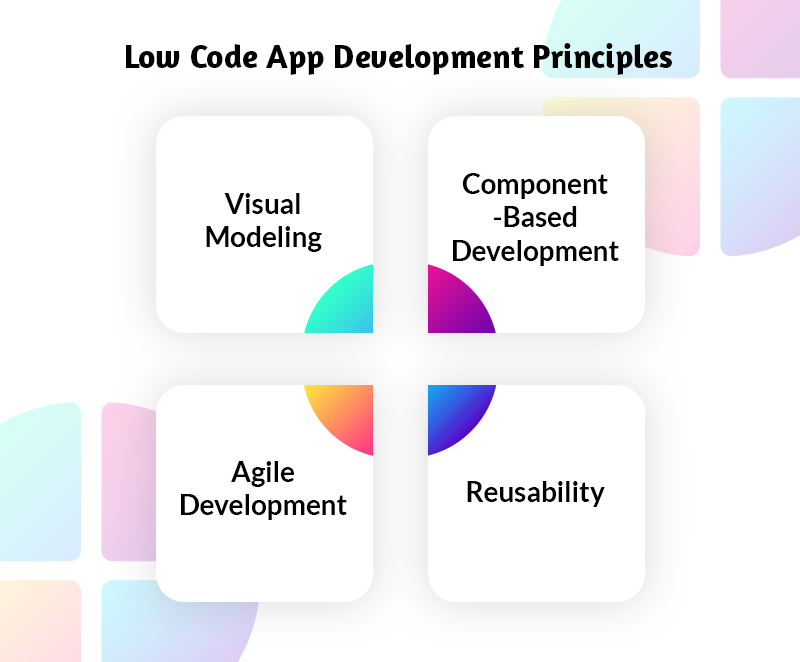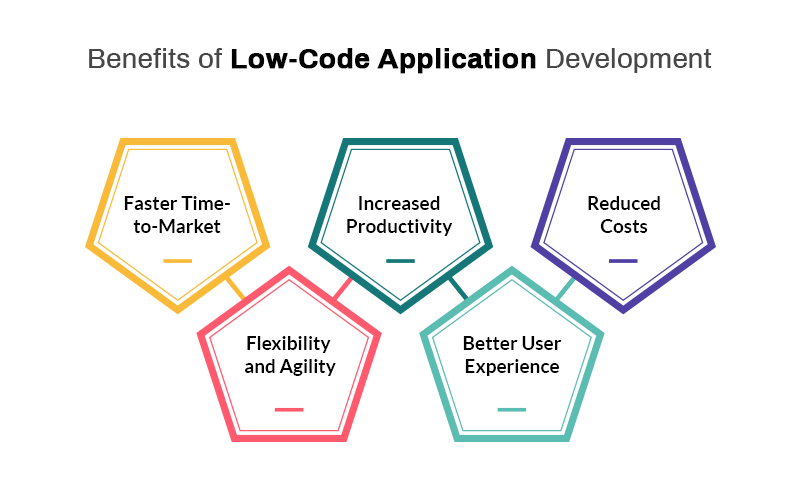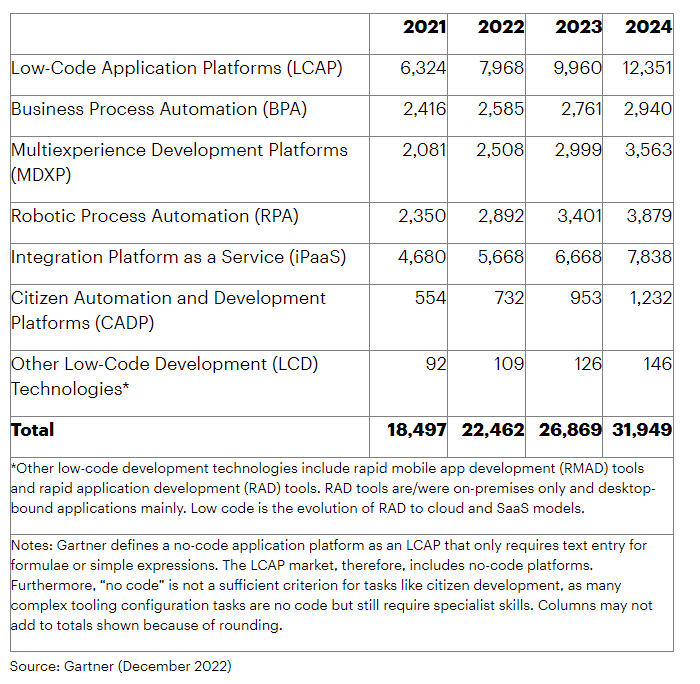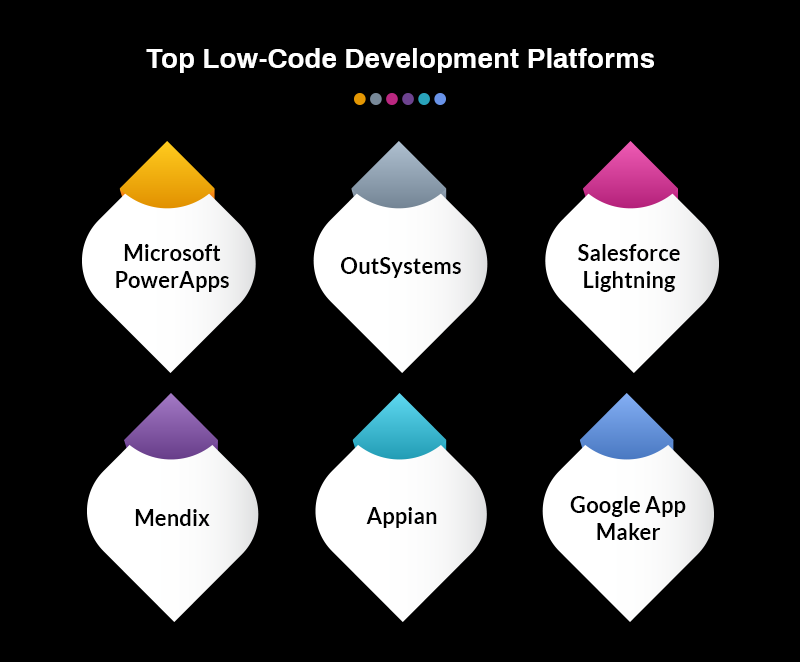Low-Code development is a software development approach that enables developers to create applications with minimal coding efforts. This method is becoming increasingly popular because it offers a faster and more cost-effective way to develop software applications compared to traditional methods. A complete guide on Low-Code development provides an overview of the concept, benefits, and challenges of Low-Code development. It also outlines the various Low-Code development platforms available in the market and provides guidance on selecting the right platform based on project requirements.
The guide also provides information on best practices for Low-Code development, including design principles, testing, deployment, and maintenance. Additionally, it discusses the potential risks associated with Low-Code development, such as security and scalability concerns, and offers strategies for mitigating these risks. Low-Code development companies are revolutionizing the way businesses create custom software applications by providing powerful platforms that automate many of the coding processes. As the
demand for custom application software continues to grow, many businesses are turning to Low-Code development companies to hire skilled Low-Code developers.
The future market for Low-Code development is promising, with experts predicting significant growth in the industry. According to the latest forecast from
Gartner, Inc., the worldwide market for Low-Code development technologies is worth $26.9 billion in 2023, up 19.6% from 2022. This growth can be attributed to the increasing demand for digital transformation and the need for rapid application development in response to changing business requirements. As Low-Code development continues to gain momentum, it is expected that more companies will adopt this approach to improve their software development processes and stay competitive in the market.
In this article, we will explore the principles of Low-Code development, their benefits, features, and the differences between Low-Code and No-Code development.
What is Low-Code Application Development?
Low-Code application development is a process of creating software applications with minimal or no coding required. It involves using visual interfaces, drag-and-drop tools, and pre-built components to develop applications quickly and efficiently.
Low-Code platforms provide a way for developers and non-developers to create complex applications in a fraction of the time it would take to build them from scratch. With Low-Code development, users can create applications by selecting pre-built components, connecting them, and configuring them to meet their needs. This approach allows businesses to rapidly build and deploy software applications, often with fewer resources than would be required using traditional software development methods.
Low-Code platforms typically include features such as integrated development environments (IDEs), visual design tools, and drag-and-drop interfaces for building user interfaces, data models, and workflows. They also often include pre-built connectors to external data sources, APIs, and third-party services, making it easy to integrate with existing systems and technologies.
Low-Code development can significantly speed up the development process, lower costs, and enable organizations to respond quickly to changing business needs.
Low Code App Development Principles

Low Code App Development Principles are a set of guidelines that define the best practices for developing applications using Low Code development platforms. These principles are designed to ensure that applications developed using Low Code development platforms are high-quality, scalable, and maintainable. Some of the key principles of Low Code App Development are as follows:
Visual Modeling
Low Code development platforms provide visual modeling tools that allow Low-Code developers to create applications using a graphical interface. This principle emphasizes the use of visual modeling tools to create application components, such as user interfaces and data models.
Component-Based Development
Low Code development platforms rely on pre-built components and templates to enable rapid application development. This principle focuses on the use of pre-built components to simplify the development process and reduce the amount of custom coding required.
Agile Development
Low Code development platforms enable developers to iterate quickly and respond to changing requirements. This principle emphasizes the use of Agile development methodologies, such as Scrum and Kanban, to enable rapid development and deployment.
Reusability
Low Code development platforms should promote the reuse of application components to reduce development time and costs. This principle emphasizes the importance of creating reusable components, such as modules and libraries, that can be used across multiple applications.
Hire Low-Code developers who can create high-quality, scalable, and maintainable applications using Low Code development platforms. These principles are essential for ensuring that applications developed using Low Code development platforms are secure, flexible, and cost-effective, enabling businesses to deliver applications faster and with greater agility.
-
General-Purpose Low-Code Development Platforms: These platforms are versatile and can create any type of application required, from business processes to mobile applications.
-
Business Process Management (BPM) Platforms: BPM platforms are designed to create, manage, and optimize business processes. These platforms are often used to automate workflows and improve operational efficiency.
-
Database Low-Code Platforms: These platforms are focused on data systems and are used to manage and process large amounts of data quickly.
-
Mobile Application Development Platforms (MADP): MADP platforms are designed specifically for creating mobile applications for different mobile platforms such as iOS and Android.
-
Web Application Development Platforms: These platforms are used to create web applications that can be accessed through a web browser. They are often used to develop e-commerce sites, customer portals, and other types of web-based applications.
-
Integration Platforms: Integration platforms are used to integrate different software applications and systems to work together seamlessly. They are often used in enterprise environments to connect disparate systems and improve data flow and communication.
Here are some of the top Low-Code development platforms and a brief overview of their features:
1. Microsoft PowerApps
Microsoft PowerApps is a cloud-based platform that allows users to build web and mobile applications without needing extensive coding knowledge. It integrates with other Microsoft applications such as Excel, SharePoint, and Dynamics 365, making it a great choice for businesses that use these platforms. Users can create apps using a drag-and-drop interface and customize them with PowerApps formulas and workflows.
2. OutSystems
OutSystems is an enterprise-grade Low-Code development platform that provides end-to-end application development capabilities. It offers a visual development environment and supports both web and mobile applications. It also provides integration with a wide range of third-party systems and supports Agile development methodologies.
3. Salesforce Lightning
Salesforce Lightning is a Low-Code platform for building custom applications on the Salesforce platform. It provides a drag-and-drop interface for creating custom user interfaces, workflows, and integrations. The platform also provides a library of pre-built components and templates that users can use to quickly build and customize applications.
4. Mendix
Mendix is a Low-Code platform that allows users to create web and mobile applications quickly and easily. It provides a visual development environment and supports the development of complex applications. Mendix also provides a range of pre-built templates and connectors for integrating with other systems.
5. Appian
Appian is an enterprise Low-Code development platform that provides a unified platform for building web and mobile applications. It offers a drag-and-drop interface and supports a wide range of pre-built components for rapid application development. The platform also provides integration with third-party systems and supports Agile development methodologies.
6. Google App Maker
Google App Maker is a Low-Code development platform that allows users to create web and mobile applications without extensive coding knowledge. It provides a visual development environment and supports the development of custom workflows and integrations. The platform integrates with other Google applications such as Google Drive and Google Sheets, making it a great choice for businesses that use these platforms.
Each of these Low-Code development platforms provides unique features and capabilities that cater to different business needs. Companies can choose a platform based on their specific requirements and create custom applications quickly and easily.
Low-Code platforms are software development platforms that allow users to create and deploy applications with minimal coding effort. These platforms aim to make it easier and faster for businesses and organizations to develop custom software solutions to meet their specific needs. Here are some of the key features of Low-Code platforms:
Visual Development Interface
Low-Code platforms provide a visual interface that allows users to drag and drop pre-built components and widgets to create their applications. This interface typically requires little or no coding knowledge, making it easy for non-technical users to build applications.
Rapid Application Development
Low-Code platforms are designed to accelerate the development process by providing pre-built templates, modules, and other components that can be quickly assembled into a functioning application. This can significantly reduce development time and allow businesses to respond more quickly to changing market conditions.
Integration with Other Systems
Low-Code platforms are designed to work with a variety of other systems, including databases, APIs, and other software applications. This allows users to integrate their Low-Code applications with existing systems, making it easier to automate business processes and workflows.
Mobile App Development
Many Low-Code platforms offer
mobile app development capabilities, allowing users to create mobile apps for iOS and Android devices. This can be especially useful for businesses that need to provide mobile access to their services or information.
Collaboration
Low-Code platforms often include collaboration features that allow multiple users to work on the same project simultaneously. This can improve productivity and enable teams to work more efficiently.
Security
Low-Code platforms typically include security features, such as authentication and authorization, to ensure that applications are secure and compliant with data protection regulations.
Customization
Low-Code platforms allow users to customize their applications to meet their specific needs. This includes the ability to modify the user interface, add new features, and integrate with other systems.
Scalability
Low-Code platforms are designed to be scalable, allowing applications to grow and evolve as business needs change. This means that businesses can start small and gradually add more features and functionality as needed.
Low-Code platforms provide a powerful and flexible tool for businesses that need to develop custom software applications quickly and efficiently. With their ease of use, rapid development capabilities, and ability to integrate with other systems, Low-Code platforms are becoming an increasingly popular choice for businesses of all sizes.
Benefits of Low-Code Application Development

Low-Code application development is a software development approach that allows users to create software applications using visual tools and pre-built components rather than writing code from scratch. Here are some of the key
benefits of Low-Code application development:
Faster Time-to-Market
Low-Code application development allows developers to create applications more quickly than traditional software development approaches. By leveraging pre-built components and visual tools, developers can create applications in a fraction of the time it would take to write code from scratch.
Increased Productivity
Low-Code application development enables developers to be more productive by automating many of the repetitive tasks involved in software development. This frees up developers to focus on more complex tasks, such as designing the application's architecture and user experience.
Reduced Costs
Low-Code application development can significantly reduce development costs by eliminating the need to hire specialized developers with extensive coding skills. This can also reduce ongoing maintenance costs since the use of pre-built components reduces the amount of code that needs to be maintained.
Flexibility and Agility
Low-Code application development allows businesses to be more flexible and agile in responding to changing business requirements. With Low-Code development, changes can be made quickly and easily, without the need for extensive coding or testing.
Better User Experience
Low-Code application development tools often include pre-built user interface components that make it easier to create attractive and intuitive user interfaces. This improves the user experience and reduces the need for extensive user testing and feedback.
Low-Code application development provides a powerful and flexible tool for businesses that need to create custom software applications quickly and efficiently. By leveraging pre-built components and visual tools, Low-Code development can significantly reduce development time, improve collaboration, and reduce costs while delivering high-quality software applications.
What are the Challenges of Low-Code Development?
While Low-Code development offers many benefits, some challenges need to be addressed. Here are some of the main challenges of Low-Code development:
Limited Customization
While Low-Code platforms provide a wide range of pre-built components and widgets, customization options may be limited. This can be a problem for businesses with very specific needs, as they may not be able to create the exact application they require.
Technical Limitations
Low-Code platforms may not be able to handle all the technical requirements of an application. This could be due to limitations in the platform itself or the inability to integrate with other systems.
Limited Control Over Code
Low-Code platforms often generate a lot of code automatically, which can make it difficult for developers to have complete control over the code. This can be problematic when trying to optimize performance or when dealing with complex business logic.
Security Concerns
Low-Code platforms may not be as secure as traditional software development methods, as they rely heavily on pre-built components that may not be fully vetted for security vulnerabilities. This can be a particular concern for businesses that deal with sensitive data.
Learning Curve
While Low-Code platforms are designed to be easy to use, there is still a learning curve associated with them. Developers may need to learn new tools and workflows, which can slow down development initially.
Vendor Lock-In
Low-Code platforms may tie businesses to a specific vendor or platform, making it difficult to switch to another platform in the future. This can be a concern for businesses that want to maintain flexibility and control over their applications.
Maintenance Challenges
Low-Code applications may require more maintenance than traditional applications, as they rely heavily on pre-built components that may need to be updated or replaced over time. This can be a challenge for businesses that want to minimize ongoing maintenance costs.
Low-Code development has many benefits, but businesses need to be aware of the potential challenges and take steps to address them. This includes carefully evaluating Low-Code platforms to ensure they meet their specific needs, investing in developer training and education, and regularly reviewing and updating Low-Code applications to ensure they remain secure and up-to-date.
Difference Between Low-Code and No-Code development
Low-Code and no-code development are two approaches to software development that have gained popularity in recent years due to their ability to simplify and speed up the software development process. While both approaches share some similarities, there are key differences between them.
Low-Code development involves using a visual, drag-and-drop interface to build applications with minimal coding. The idea behind Low-Code development is to reduce the amount of custom coding required to create an application, allowing developers to focus on the logic and functionality of the application rather than the details of implementation. Low-Code development platforms typically provide pre-built components and templates that can be assembled into applications using a graphical interface, making it easier for non-technical users to create software applications.
No-code development, on the other hand, takes Low-Code development a step further by eliminating the need for any custom coding whatsoever. With no-code development platforms, users can create applications entirely through a visual interface, using pre-built templates, widgets, and other components. No-code development platforms are designed to be used by non-technical users who do not have programming skills, making it easier for anyone to create software applications without requiring specialized expertise.
The main difference between Low-Code and no-code development is the amount of coding required to create an application. Low-Code development still involves some custom coding, but it greatly reduces the amount required by providing pre-built components and templates. No-code development eliminates the need for any custom coding, making it easier for non-technical users to create applications entirely through a visual interface. Both approaches have their benefits and drawbacks and are suited for different use cases, depending on the complexity and customization requirements of the application being developed.
Conclusion
Low-Code application development has become a game-changer in multiple industries by offering unprecedented benefits to businesses. By simplifying the development workflow through visual tools, low code has made app development easier, faster, and more cost-effective. It is important to note that while low code may not be a complete alternative to traditional app development methods, it can be a value proposition for businesses in certain circumstances.
Low-Code development companies are helping businesses of all sizes to stay competitive in the digital age by providing affordable and efficient solutions for software development. If you are considering Low-Code development, it is recommended to keep these observations and recommendations in mind before embarking on a new project. This article can serve as your go-to guide for Low-Code app development. Moreover, if you are unsure about how to execute a Low-Code project, Hire Low-Code developers from Hyperlink InfoSystem as our experts can assist you in your endeavors.



























